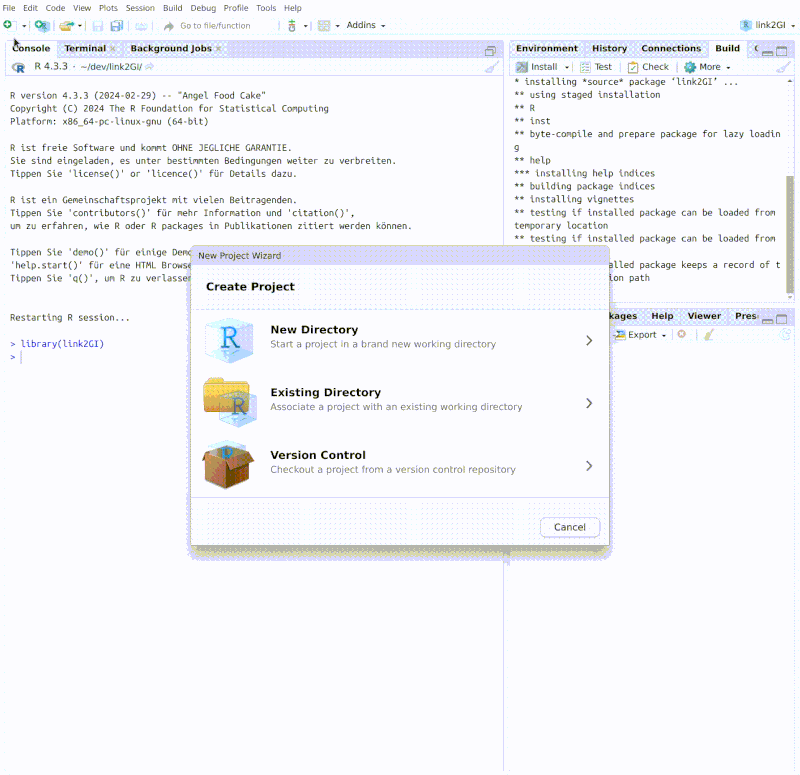Reproducible Project Structure
Reproducible projects in R emphasize streamlined project setup and efficient workflows. There are a number of very helpful tools in the R universe, such as renv, usethis, or here, that range from setting up a stable R environment to generating custom project structures to getting the necessary paths in an easy way. In addition, there are a number of project structure packages and templates for creating easy-to-use and transparent project structures. Namely, tinProjects, prodigenr or workflowr are R packages designed to facilitate reproducible research through automated project structuring and standardization. They all promote organized project directories, emphasize reproducibility by integrating with tools like Git and renv, and reduce manual setup efforts to ensure consistent and error-free project initialization. These packages help build a solid foundation for research and ensure that best practices include using separate scripts for data processing, analysis, and reporting, and combining code with narrative in R Markdown documents from the start. This organized setup improves reproducibility by making it easier to maintain, share, and replicate research. For a more comprehensive overview, have a look at the CRAN Task View Reproducible Research.
Why initProj then?
In the context of link2GI, which relies heavily on third-party command-line APIs and requires complex and stable folder and file structures, a flexible, lightweight R project setup greatly improves the integration of OS command-line tools into spatial workflows by:
- Streamlining integration: Simplifies the integration of essential command-line tools such as
GDALor the sophisticatedOrfeo Toolbox(OTB) and the growing universe of r(-)spatial packages for advanced geospatial processing. - Improve data exchange: Organized variable and metadata management ensures accurate and efficient data transfer between different and especially command-line based processes and APIs.
- Enhanced Cross-Platform Compatibility: Facilitates cross-platform adaptability, which is critical when using multiple spatial analysis tools, even more so when using different shells.
- Performance Optimization: Switching between generic R and command-line tools takes advantage of the speed and efficiency of command-line tools, which is especially beneficial when handling large spatial datasets.
initProj provides a complete and flexible working environment for GI projects. The focus is on a simple, efficient and reproducible project management and data handling. The basic framework is formed by a defined folder structure, initial scripts and configuration templates as well as optional Git repositories and an renv environment. A corresponding RStudio project file is also created. It supports the automatic installation (if needed) and loading of the required libraries including various standard setup skeletons to simplify project initialisation.
The function creates a skeleton of the skeleton scripts main-control.R, pre-processing.R, 10-processing.R and post-processing.R, and creates corresponding parameter configurations files stored as yaml files in scr/configs/. The script src/functions/000_settings.R holds all specific project settings. Easy access to all project paths is provided via the list variable dirs.
For this reason, the link2GI package includes a lean and lightweight but focused approach that integrates git, renv, and a highly flexible folder and package setup process that is simpler than existing approaches, increasing efficiency, accuracy, and performance in geospatial workflows.
Using the RStudio GUI
When using RStudio, a new project can be created by simply selecting the Create Project Structure (link2GI) template from the ***File -> New Project -> New Directory -> New Project Wizard *** dialogue.

Using the Console
The basic setup of a default project, which initializes Git and renv, is done with the following call.
root_folder = tempdir() # Mandatory, variable must be in the R environment.
dirs = initProj(root_folder = root_folder, standard_setup = "baseSpatial")
It is easy to customize the folder structure. By default you will create
link2GI::setup_default()$baseSpatial$dataFolder
[1] "level0" "level1" "level2" "run" "rawdata"
link2GI::setup_default()$baseSpatial$code_subfolder
[1] "src" "src/functions" "src/configs"
Use the folders argument to create a specific structure or subfolder structure of your project.
root_folder = tempdir() # Mandatory, variable must be in the R environment.
dirs = initProj(root_folder = root_folder,
standard_setup = "baseSpatial",
folders = c("data/rawdata/provider1/", "docs/quarto/")
)
A more complex call that integrates the git and renv setup, adds some additional folders and libraries as well as a location tag will be:
dirs = initProj(root_folder = tempdir(),
folders = c("data/newdata/"),
init_git = TRUE,
init_renv = TRUE,
code_subfolder = c("src", "src/functions","src/deprec"),
standard_setup = "baseSpatial",
loc_name = "oldplace",
appendlibs = c("raster"),
openproject=TRUE)